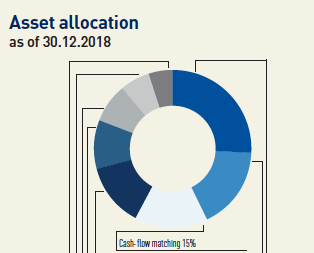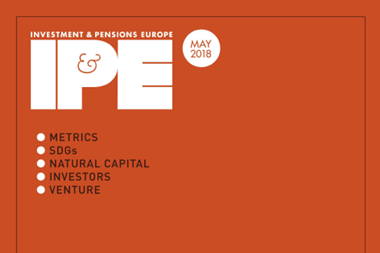The Global Impact Investing Network (GIIN) has presented “core characteristics” of impact investing in a bid to establish clarity and pave the way for further growth of the market.
Speaking to delegates at an impact investing conference in The Hague on Tuesday, Amit Bouri, CEO and co-founder of the GIIN, said the characteristics had been developed to guard against the effects of disingenuous or mistaken marketing.
“As the sector’s popularity grows, there will be some people who put an impact label on financial products that don’t deserve it,” he said. “Some may do so on purpose to profit from the ‘brand’, others simply may not know any better.
“If we let this ‘impact washing’ become widespread, the brand will be diluted, and the whole industry will suffer from the ensuing scepticism.”
The impact investing market needed to grow with integrity to ensure “impact at scale” rather than just “capital at scale,” he said.
According to the GIIN, the core characteristics will help investors understand the essential elements of impact investing and what constitutes credible impact investing practice.
They could be used to inform investors’ own approach as well as assess potential investment partners.
Sapna Shah, director of strategy at the GIIN, said: “Our priority is to set appropriate expectations and define practices in a way that is useful to an investor building or deepening an impact investing portfolio, to support greater participation from both new and experienced impact investors.”
There are four impact investing “tenets”, according to the GIIN: intentionality, evidence-based investment design, impact management, and “contribution to industry growth”.
During a panel discussion on “impact washing” at the Impact Summit Europe conference, a delegate asked whether the risk of impact washing could be seen as “a necessary evil”, where the risk of dissuading more investors to engage with impact investing was perhaps the bigger danger.
The core characteristics of impact investing, according to the GIIN
Intentionality: This, said the GIIN, is “at the heart of what differentiates impact investing from other complementary practices that focus on avoiding harm or mitigating risk”. Impact investing was about actively setting out to “positively contribute to social or environmental solutions by establishing clear impact objectives and thorough strategies to achieve these goals ahead of execution”.
Evidence-based investment design: Impact investing, according to the GIIN, involved the use of empirical data and research from financial services and other disciplines, including social and environmental sciences, as “the basis and support to establish impact objectives and validate results”.
Impact management: Impact investors also needed to commit to measuring and managing an investment’s impact with a view to meeting the set objectives. The GIIN said this meant using “feedback loops” whenever possible.
Contribution to industry growth: “Impact investors share non-proprietary and non-private positive and negative learnings, evidence, and data so others can benefit from their experience”.
Questions of size
The GIIN estimated the size of the global impact investing market to be $502bn (€446bn). This latest figure provided “the most rigorous estimate of the current size of the impact investing market”.
The data is self-reported by impact investing organisations identified by the GIIN, with the association adding $84bn on the basis of extrapolation.
Earlier this week the Global Sustainable Investment Alliance (GSIA) released figures putting the size of the impact investing market at $444bn at the start of 2018. The GSIA included “community investing” in its definition.
According to the GIIN, the $502bn are deployed by 1,340 organisations. More than 800 asset managers accounted for in excess of 50% of the total assets under management, with 31 development finance institutions managing just over a quarter.
In a survey of conference delegates carried out by Phenix Capital, a European impact investing consultant, almost 80% of respondents expected to increase their target allocation to impact investing over the next three years. A third of the institutional asset owner respondents with an impact allocation allocated at least 10% of their assets under management to impact strategies.
IPE will be publishing a special report on impact investing in May
























No comments yet